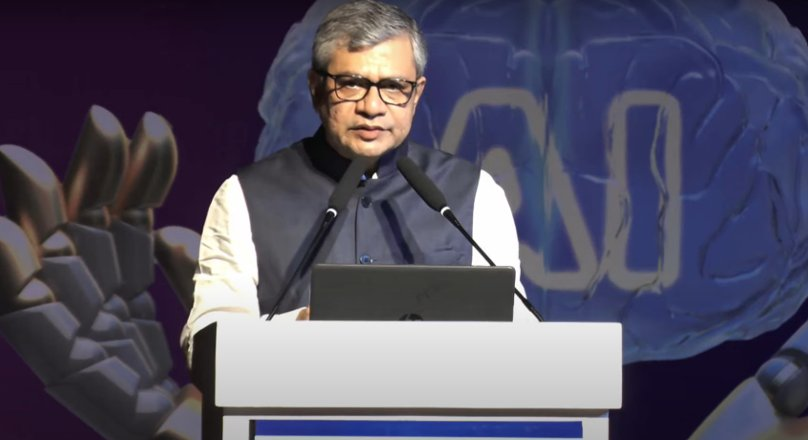India is making significant strides in the regulation and development of artificial intelligence (AI), as highlighted by recent statements from Ashwini Vaishnav, the Union Minister for Electronics and Information Technology at the Global Summit on Artificial Intelligence held in Delhi on 3-4th July, 2024. Ashwini Vaishnav mentioned that the government is focused on creating a regulatory framework and robust public infrastructure to harness AI’s potential while mitigating associated risks.
Introduction
During India’s Global AI summit that commenced on 3rd July, 2024 various national and International personalities spoke about the potential of AI. During various addresses on the summit, one of the sessions taken by Minister of Information and Technology, Ashwini Vaishnav talked about India’s Approach to regulate AI. He has emphasized the need for a global approach towards mitigating the risk posed by AI such as GP Hiroshima summit and EU AI act. While talking about India, Ashwini Vaishnaw said that India is looking at a balanced approach to AI regulation. The government aims to establish a comprehensive framework that addresses technical, ethical, and legal aspects of AI. This framework is expected to align with global standards and principles to ensure the safe and responsible use of AI technologies.
DPI-like Approach for AI
Drawing parallels with India’s successful Digital Public Infrastructure (DPI) model, Vaishnaw has announced a similar approach for AI. The minister stated, “The approach that the Prime Minister has always adopted is that technology should be accessible to everybody. So, the digital public infrastructure is a classic case where no single payment provider or service provider has a monopoly over the service. The government invests in the platform, and everybody becomes a part of that same approach we will adopt in AI.” This includes the creation of a public platform for AI resources, which will be accessible to startups, researchers, and industry stakeholders. The platform will provide high-quality datasets, compute power, and common frameworks to facilitate innovation and application development in various sectors such as agriculture, healthcare, and education.
Skill Development and Collaboration
A major focus of India’s AI strategy is skill development. The government plans to invest in training programs to enhance the capabilities of the workforce in AI technologies. One of the step that Indian Government is looking to take is Invest in an AI computing infrastructure of over 10,000 GPUs to create an AI Innovation Center. This initiative aims to equip professionals with the necessary skills to develop and deploy AI solutions effectively. Furthermore, the government seeks to foster collaboration among industry players, academia, and startups to drive AI innovation and address societal challenges.
Addressing Global AI Challenges
Vaishnaw acknowledged the global challenges posed by AI, such as privacy concerns, ethical dilemmas, and potential misuse. He called for a joint international approach to AI regulation, emphasizing the need for universal principles and collaborative efforts to ensure the technology is used for the greater good. He further added, “AI can be a big tool for solving many problems simultaneously. We need to contain the risks, which are AI bricks. We also believe the solution must come through a global thought process. It cannot be done in isolation by any country.” As part of this effort, India has taken a leadership role in the Global Partnership on Artificial Intelligence (GPAI), aiming to contribute to the global discourse on AI governance
Public Engagement and Transparency
The government recognizes the importance of transparency and public engagement in AI governance. Plans are underway to establish oversight mechanisms, such as advisory bodies and AI risk committees, to provide expert advice and recommendations. These bodies will ensure that AI systems are developed and deployed in a manner that aligns with public interests and ethical standards.
Conclusion
India’s approach to AI regulation reflects a commitment to leveraging technology for social and economic development while addressing potential risks. By creating a supportive infrastructure, promoting skill development, and fostering international collaboration, the government aims to position India as a global leader in AI innovation and governance.
References:
- [EconomicTimes](https://economictimes.indiatimes.com/tech/artificial-intelligence/government-working-on-regulation-for-ai-it-minister-ashwini-vaishnaw/articleshow/111454670.cms?from=mdr),
- [FinancialExpress](https://www.financialexpress.com/business/digital-transformation-world-needs-joint-approach-on-ai-regulations-vaishnaw-3542870/#:~:text=IT%20minister%20Ashwini%20Vaishnaw%20on,technology%20to%20prevent%20user%20harm)
- [BusinessStandard](https://www.business-standard.com/technology/tech-news/india-will-follow-a-dpi-like-approach-for-artificial-intelligence-vaishnaw-124070300905_1.html).
- [IndiaAI] https://indiaai.gov.in/article/minister-ashwini-vaishnaw-highlights-ai-s-transformative-potential-and-risks-at-global-indiaai-summit

